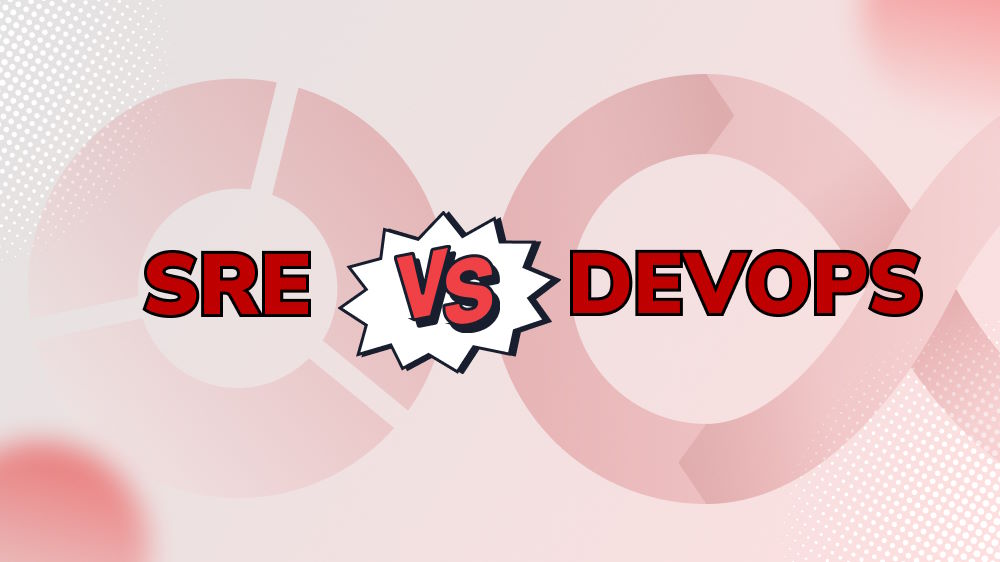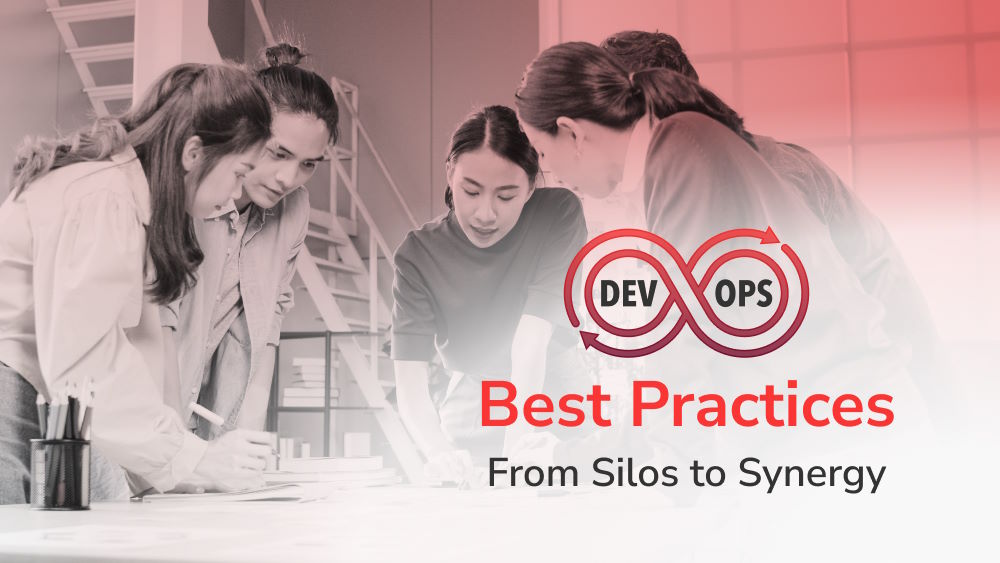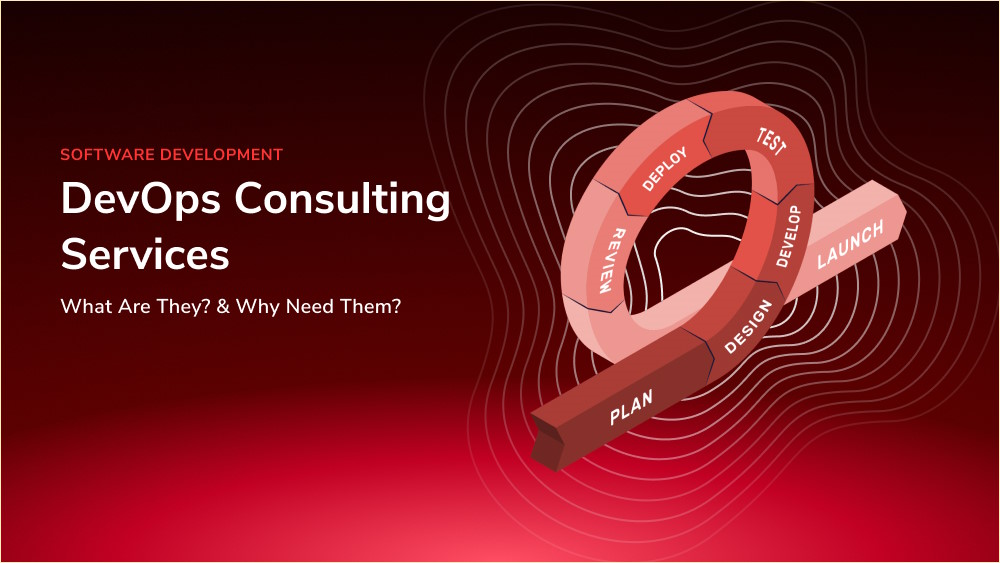What Is the Goal of DevOps in Software Development?

Content Map
More chaptersIf you are in the process of finding a software development team to help bring your idea to life, then you may be wondering: how do different teams work in different ways to complete a project? How do they conceptualize an idea, deliver a minimum viable product (MVP), and then take on board feedback to fine-tune the final product until it is ready to release?
The good news is that most software development teams follow the DevOps methodology, an approach to software development that has been around for over two decades now, and it has only grown in usage over the years. But what makes DevOps so popular? What does the process look like? And what outcomes does it aim to achieve?
In this article, you will find out what DevOps is, how it works, what the goal of DevOps is, and what the best practices are to consider when choosing a DevOps team for your project.
What Is DevOps?
DevOps is a term that stands for ‘Development’ and ‘Operations,’ which, when combined, creates the word DevOps. It is a type of methodology that aims to streamline the development process by eliminating siloed thinking between departments, encouraging ongoing feedback and collaboration, emphasizing security (in every aspect of the design, programming, and testing phases), and fostering automation and the utilization of artificial intelligence (AI) to streamline various tasks.
It is important to remember that DevOps is not a set of tools or technologies; it is a much broader cultural mindset, one that is designed to enable new ways of thinking to tackle large, complex problems and foster a DevOps culture of ongoing communication, collaboration, and feedback during each stage of development. DevOps works primarily in a series of sprints, or loops, where during each sprint (which can last anywhere from two to three weeks or more, depending on the scope), each department aims to achieve its intended goals. Upon completing each sprint, the team comes together to review its work, provide feedback, and identify any shortcomings to improve the performance of the next sprint.
The cycle continues until the project completion, and the process itself is subject to change in scope (as well as priorities) as the needs of the project change. This is one of many reasons why the DevOps methodology has become so popular in recent years, as its workflow enables development teams to quickly adapt to changes in scope, priorities, budget, and even key features or functions.
How Does DevOps Work?

DevOps works a bit differently to more ‘traditional’ software development workflows, such as the Waterfall software development methodology.
Under the waterfall methodology, teams would be split up into individual departments and then focus on their dedicated tasks (with little to no regard for how their contribution would impact other aspects of the final product) until the project was complete. A typical waterfall pipeline would consist of the following steps:
- Requirements – Define the technical requirements of the project, including the choice of programming languages, frameworks, tools, and more.
- Design – Create the logical and physical design of the software application, such as schemas.
- Implement – When programmers follow the technical and design specifications to produce the actual code required for the software application to function properly.
- Verify – Here, the end user (the customer) reviews the work so far and provides feedback. Any feedback is taken on board by the team, who works diligently to address issues and make necessary improvements. The team will then release the final product.
- Maintain – Following the release of the final product, the team will continue to monitor, update, and maintain the software – resolving bugs and errors, adding new features, decommissioning outdated features, and more.
With the DevOps methodology, though, the pipeline looks a bit different from the one above. That’s because the process is less linear than the waterfall approach, as it adopts a looser and more flexible structure, allowing for greater adaptability in times of unforeseen changes in scope. Here is an example of what a typical DevOps pipeline may look like (keeping in mind that different teams may adopt different approaches to achieve different outcomes):
Define Requirements
Just like the waterfall approach, DevOps teams will take the time to understand the client’s requirements. These include their desired goals, target audience, technical needs, pain points, and more.
At Orient Software, we go one step further by developing user stories and documenting them in our project management system, which allows the whole team to fully understand your target audience and deliver a solution that satisfies your unique requirements.
Create UX Design
Once the business goals and technical requirements are established, the team will define the user experience (UX). This is the journey that the end user will go through to interact with your software application, and it will outline the intended outcomes that you want the user to achieve.
UX design also extends to the process of acquiring new users, such as creating advertising material and instructional information. Using the right words and conveying the right information at the right time is essential for new users to comprehend how your product works and show them what they can do with it.
Develop and Test
From there, the next step is to develop and test the product. The programmers will write the actual code, while the testing team will perform a series of tests as time goes on, such as unit testing (testing the individual components of software solutions) and integration testing (testing how well these components work together and communicate with one another), to name a few.
It is worth noting that security is emphasized heavily during each stage of the DevOps process, where every team member – from designers and programmers to testers – will follow best practices to incorporate security into every aspect of the product, as opposed to leaving it until the last minute as a final consideration. This helps improve the safety and security of the final product, and it results in less time spent on addressing known vulnerabilities, as those issues should have (mostly) been addressed during the design and programming phase.
That said, not every product will be perfect upon reaching testing, which is where the final quality assurance step will take place before launch.
Release and Maintain
Once both the team and client are happy with the final software application, the product is primed for launch on the applicable platforms and devices and then released at the agreed times. The team will then continue to improve the product for the duration of the post-launch lifecycle, for which the duration of that lifecycle will be agreed upon in advance.
The team will address feedback and issues, add new features, remove outdated features, improve performance, and improve security to prevent the risk of the latest emerging threats from compromising the system.
What Is the Goal of DevOps?

The goal of the DevOps methodology is quite simple: To enable software development teams to release higher-quality software at a faster rate and at a level that exceeds customer expectations.
Additionally, DevOps helps streamline the overall development process, fostering a culture of ongoing communication, collaboration, and feedback (both for the development team and for the client) to make sure that everyone is on the same page about who the product is for, how it will work, and the outcomes it will achieve. Understanding the disadvantages of DevOps can also help you identify potential challenges and then formulate solutions to overcome those roadblocks.
Here are a few primary goals that, when handled properly, the DevOps methodology can help any software development team achieve.
Improve Communication and Collaboration
In today’s competitive business environment, staying ahead of the rest by delivering higher-quality products – at a rapid pace – is essential to a successful outcome. One way that DevOps helps achieve these outcomes is to prioritize ongoing communication and collaboration.
Under this approach, every team member – regardless of their role, duties, and responsibilities – shares equal responsibility for different aspects of the project. As a result, departments have a shared incentive to deliver their milestones on time, every time, to affirm the smooth delivery of the final product. By eliminating silos and bringing departments together, team members can share feedback, comments, and ideas on the regular, making it easier to identify and troubleshoot issues as well as identify areas of opportunity.
Receive Ongoing Comments and Feedback
Communication is the key when it comes to a successful DevOps pipeline. It’s all about making sure that each team member, regardless of who they are, is equally heard in the software development lifecycle. DevOps makes this possibility a reality by implementing ongoing comments and feedback into each phase, particularly both during and at the end of each sprint. After completing each sprint, all team members from all departments come together to review the results of the sprint.
What worked? What didn’t work? What outcomes were achieved? And how could things be done better next time? Asking these questions and seeking answers helps software development teams identify problem areas and formulate solutions to deliver better results next time. This approach also gives clients room to share their thoughts, comments, and feedback, comments that the rest of the team can take on board to tune up the quality of the final product.
Client feedback is especially important, as they often have greater insight into the needs, wants, and expectations of their target audience than the development team. So, it’s important for developers to listen to client feedback and, within reason, take their suggestions on board to make meaningful improvements to the software.
Accelerate Development Times
With the ability to address issues quickly and, ideally, early (especially since security is a primary focus of the team during the early stages of development), DevOps teams have the potential to deliver projects faster than waterfall teams.
The key word here, of course, is ‘potential,’ as there is no guarantee that DevOps will immediately deliver faster results. This is why DevOps is more than just using the right tools and technology; it’s also about embracing a much wider cultural shift, changing the way software development teams are structured, assigned roles and responsibilities, and able to work together to solve complex problems.
Accelerating development times is also aided by the focus on Continuous Delivery and Continuous Integration. Essentially, this is a cycle of miniature sprints that development teams go through to complete milestones and release software in a timely and efficient manner. Continuous delivery also incorporates DevOps automation into the software development process, streamlining previously manual tasks to build, test, and deploy products faster than ever before.
Create More Scalable Products
Scalability is an important design consideration for software applications developed and released in a DevOps pipeline these days. It relates specifically to how much room the software has to grow after being released. For example, scalable software makes it possible for developers to add new features, functions, and services to a product that has already been released relatively easily. At least, they can do so without significantly changing the source code of the software.
Scalability is especially important for cloud-based infrastructure, as these platforms often include multiple functions in one service, essentially acting as a ‘mini’ operating system for users to access a specific family of products in one ecosystem. Scalable apps also make it easier for developers (who provide post-launch support) to respond to unexpected events, such as a sudden urge in traffic due to a successful viral marketing campaign.
This is one of the reasons why more companies are using microservices to power their apps, breaking them down into individual components (or services), which development teams can work on individually without disrupting the rest of the app.
Best Practices to Consider When Choosing a DevOps Team

Now that you understand the main goals that DevOps aims to achieve let’s take a look at what you should consider when hiring a DevOps team.
Chances are, you have an idea for a software application, possibly a great idea, too. But you need the right team to bring your idea to life. You know by now that DevOps is the way to go for most software development projects, but there are many ways to put this workflow into action.
Here are a few tips to help you choose the right DevOps team for your project.
Ask About the Team’s Use of Automation and AI
With such a strong emphasis on the use of automation and artificial intelligence (AI), it’s important to consider how your DevOps team uses these tools.
How do these DevOps tools improve their workflow? What steps does the team take to ensure the tools achieve the intended results? Ideally, any DevOps team should have dedicated automation and AI experts, professionals who are responsible for setting up and monitoring these tools, ensuring they are fit for purpose and calibrated to achieve the desired results. Your DevOps team should also explain the business benefits of AI in DevOps – as opposed to just listing ‘features’ to entice you to embrace their workflow.
Any reputable software development company will be open and honest about their approach to using automation and AI. However, be wary of companies that claim to be able to achieve outlandish outcomes with AI alone; although a useful tool, they still require ongoing supervision by a dedicated expert to achieve optimal performance.
Structure and Flexibility
One of the major cornerstones of DevOps is the ability to alter and adapt quickly to new situations. Sometimes, market demand may change rapidly due to new government regulations, industry trends, and changing user expectations. Being able to adapt to these changes (without significantly disrupting the existing workflow) is essential to a successful DevOps pipeline.
Ask your potential DevOps team about their approach to change. What systems are in place to allow for change in the first place? How much room does the client have to request changes? Is there a limit on how many changes can be made? Clarifying these details will help you better understand how well your potential DevOps team can adapt to change and still meet your unique requirements.
Roles and Responsibilities
Another key aspect of DevOps is having teams assume shared responsibility for different aspects of a project. For example, everyone – from team leaders and designers to developers – must prioritize security in their workflow, incorporating secure solutions (i.e., secure code) to ensure the app is protected from the latest threats. This, of course, is just one of many examples of shared duties in a DevOps team.
Although having overlapping responsibilities can produce great results, it can lead to confusion, frustration, and disputes as well. For this reason, when you approach development and operations teams, ask about the roles and responsibilities of each team member. Also, ask how the team ensures there is no confusion or misunderstanding between departments.
At Orient Software, our DevOps teams regularly share their knowledge and experience. This enables them to dive deeper into the understanding of what different departments are doing, which helps influence the work they do in their field. As a result, each team member considers not only the impact of their work within their assigned role but also how their work will impact the rest of the team, thus increasing collaboration and even speeding up turnaround times.
Choose Orient Software as Your Next DevOps Team

Whether your priority is to build a new software application or to make improvements to your existing app, Orient Software is the team you can trust for high-quality, innovative, and forward-thinking software solutions.
For almost two decades, our highly skilled team has been using the DevOps methodology to deliver innovative software products, embracing ongoing communication and collaboration to streamline the delivery process and keep clients involved from start to finish. We are also up to date with the latest DevOps trends of 2024, ensuring you stay ahead of the curve when incorporating this methodology into your project.
Continuously evolving our DevOps pipeline has enabled us to increase the productivity, efficiency, and communication of our teams, resulting in faster delivery times and a higher volume of projects completed.
To find out how our DevOps teams can assist with your project today, contact us.







